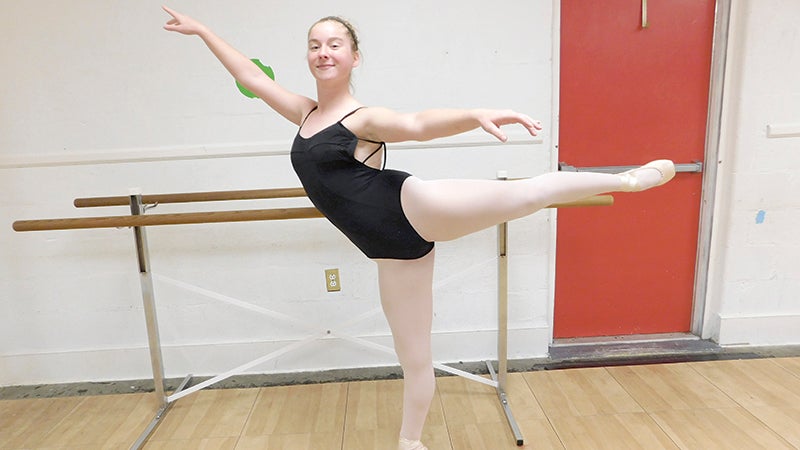F-35 ‘buzzes’ North Suffolk
Published 10:06 pm Tuesday, April 22, 2014

At the Lockheed Martin Center for Innovation in North Suffolk on Tuesday, former Air Force pilot Anthony Stutts shows Randy Forbes the controls as the congressman pilots an F-35 cockpit demonstrator.
Suffolk’s voice in the U.S. House of Representatives took an exciting story home to his wife Tuesday, experiencing an F-35 cockpit demonstrator at Lockheed Martin’s Harbour View location without crashing and burning.
At the defense contractor’s Center for Innovation on Harbour View Boulevard, Congressman Randy Forbes climbed aboard the Stark Industries-like simulator with eight television screens arrayed before him in a circular fashion, poised to reveal any catastrophic misstep.
Proving he may just be made of the right stuff, he acquitted himself admirably, taking off, taking out bad guys and landing without incident.
Before what could have been his public shaming, the chairman of the House Armed Services Committee’s Seapower and Projection Forces Subcommittee gave his take on the significance of the “fifth-generation” F-35 Lightning II program.
Good diplomacy needs three ingredients, according to Forbes: the right strategy, effective communication of that strategy, and “the capability and the capacity to make that diplomacy mean something” — in other words, a suitably big stick.
A Lockheed director on the F-35 program, Robert Rubino, said that April 15, 1953 was the last time a U.S. ground troop was killed by enemy aircraft. America has maintained dominance in the air ever since by investing in equipment as well as “men and women,” he said.
“We need to continue to do that for the next 50 years, and we are going to do that with the F-35,” Rubino said.
Forbes said America is “dangerously close to the point where we can no longer guarantee that air dominance.” But the F-35 would “meet the test” and maintain that air superiority, he added.
“The U.S. is the backstop of freedom for the world,” Forbes said, adding, “That’s why we have to get this right.”
Advanced stealth is one of the F-35’s main competition-killing features. Its shape, embedded antennas, aligned edges, internal weapons and fuel, and special coatings dramatically reduce the detection and engagement ranges of enemy defense systems or aircraft, according to Lockheed literature.
Also, “next-generation avionics and sensor fusion” gives the pilot real-time access to battlefield information, providing “unmatched situation awareness” that, combined with the aircraft’s “extreme agility, acceleration and stealth,” gives it the edge over other aircraft.
Information gathered by the F-35’s sensors is immediately shared with commanders at sea, in the air or on terra firma, “providing an instantaneous, high-fidelity view of ongoing operations.”
Three variants being built include conventional takeoff and landing, short takeoff/vertical landing and the aircraft carrier model, and the F-35 is expected to remain in the air for the next 40 years or more.
Also known as the Joint Strike Fighter, the F-35 is the Defense Department’s costliest and most ambitious aircraft acquisition, notes the U.S. Government Accountability Office.
In a report released last year, the office concluded that prior cost, schedule and performance problems have been addressed in extensive program restructuring during the past three years, a point Rubino and others were eager to stress in North Suffolk Tuesday.
“If you look at the last three years of the program, the problems have been stable,” Rubino said.
“When we get down to the next four years, we think we will get to a $75-million (per-aircraft) price tag” in 2012 dollars.
Total U.S investment to develop and purchase 2,457 F-35s through 2037 is nearing $400 billion, the accountability office reported in June.
But sequestration has taken a bite, Rubino said, with 34 aircraft — down from a previous target of 42 — currently proposed for next fiscal year.
Increased production would lower the aircraft’s price tag, Rubino added. Canada, the United Kingdom, Australia, the Netherlands, Denmark, Norway, Japan, Israel, Italy and Turkey all have orders for the fighter.
Forbes described what he called a new paradigm for questioning defense planning and spending.
“What we have to do … (is) ask what is the threat to the United States of America, and what kind of national strategic plan is it going to take to defend us from that threat,” he said, adding that taxpayers are entitled to say they want the most “bang for their buck.”
After climbing aboard the simulator, Forbes’ attention was squarely on the control panel as he locked in enemy aircraft and pulled up short of the drink in a carrier landing.
Later, anticipating sharing the experience with his wife at home, he said, “I will just tell her that I didn’t crash.”





